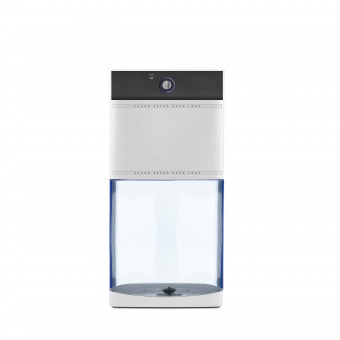DESIGN NAME:
WReuse
PRIMARY FUNCTION:
Laundry Water Recycler
INSPIRATION:
The water resources availability per capita in Colombia was 45,408 cubic meters in 2007, way above the world’s average of 8,209. And because water is as an abundant resource generates that regular citizens do not worry about taking care of it. It was not until the significant rise in the utilities that people began to consider the possibility of recycling or be more careful with the H2O.
This project came up from the laundry habits of mother's house in Bogota, Colombia. After research I realize that she wasn't the only one that collect the water from the rinse cycle of the laundry machine in buckets and use it to the next wash or inside the house for cleaning or gardening. The necessity of save money make people realice how important is to re-use the water.
UNIQUE PROPERTIES / PROJECT DESCRIPTION:
Automatic system that saves the rinse water from the last laundry load and is filtered in treating tank, passing it through a Sand filter to remove any solids, materia and clean the water.
By using the rinse water of the last washed, people can save 100% the first load of wash water. The filter does not use chlorine bleach, because is not environmentally-friendly and definitely can ruin the next load of clothes.
OPERATION / FLOW / INTERACTION:
The system has two drain tubes connectec directly to the laundry machine, each separate the water in the diferent stations. WReuse has a botton switch with multiple options such as: Drain; it drains the water directly to the grey water exit into pipe in the right side. Save mode; it drains the water to into the left side of the pipe to the tank, where the water pass trought the first filter trade. The two filter trays are removable.
Aspirate mode; when you start your next load, you turn the main washer knob to "load" pull the knob out, and it starts sucking in the treated gray water. The pump inside Wreause push up the rinse water into the tank inside the washer .Once that's done, you turn the knob to whatever cycle you want, and start it like normal.
PROJECT DURATION AND LOCATION:
The project started January 2014 in Bogota, Colombia and is still a prototype face.
FITS BEST INTO CATEGORY:
Social Design
|
PRODUCTION / REALIZATION TECHNOLOGY:
The washer outlet hose is connected from the back to the laundry machine, and to the Wreuse Tank. The water leaving the washing machine will be pumped into the drain pipe through the storage tank with the sand filter system.
The sand filter is made up of a thin layer of gravel topped off with a much thicker layer of sand within a waterproof container. Coarsely filtered water passes through the sand being finely filtered as it goes before emerging at the bottom. Then the water goes through a period of sitting and cooling. Solid particles sink to the bottom, oils and fats rise to the top, and the water in the middle is the treated laundry water. An inline disk filter in the outlet pipe is used to catch any last particles, and an aerator is used to oxygenate the Laundry Water before use.
The addition of an electric pump will make the water go up when the new wash load starts.
If the last load contains bleach the water could discolor the clothes that's why the machine has a system to let know user when the water is clean for use.
SPECIFICATIONS / TECHNICAL PROPERTIES:
-
TAGS:
Laundry Water, Wash water, water auto recycle, Save water
RESEARCH ABSTRACT:
The reuse of rinse water (tipically considered as grey water) can save 2500 gallons/water and 25 boxes of detergent/year. A top-loading washer, used around 45 gallons of water or more for a full load, but modern washing machines can use around 40 or less.
Graywater is water which has been used for washing and can potentially be reused rather than sent straight down the drains. Grey water includes water from laundry, dishwashers, baths, showers, hand washing etc. For the greywater to be stored for more than a day it must be disinfected - typically with chlorine or iodine to kill any pathogens which remain in it, treat greywater typically involves passing it through a filter to remove any solids, disinfection by the addition of a small amount of a chlorine bleach, and then a period of sitting in a settling tank to cool.
CHALLENGE:
One of the challenges was the filter system, define the size of the tank and decide what to do when the water has bleach or softener. Fabric softener has a non-sudsing agent that will neutralize detergents.
ADDED DATE:
2015-02-27 18:50:29
TEAM MEMBERS (1) :
Angela Granados
IMAGE CREDITS:
Creator: Angela Granados
|









